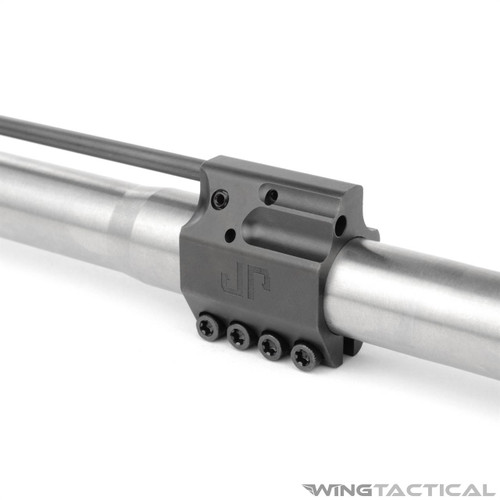
Most AR-15s are excellent firearms right off the factory line, but they sometimes need some fine-tuning to work their best. The good news is, you can solve many common issues with simple troubleshooting and adjustments, and by upgrading your components.
If your rifle is performing under par, your first step is to follow the symptoms. Diagnosing your concern will help you discover whether you can solve it with immediate action, like changing out your magazines or using different ammunition, or if you need to start thinking about taking your gun apart.
Signs Your AR-15 Is Over Gassed
If you changed your mags and ammo and are still having malfunctions when firing, your next place to check is your gas system. AR platforms create pressure in the chamber using a cyclical system. If part of that cycle is over-pressurized, the timing can fall out of sync and cause multiple issues. The signs of an over gassed AR-15 can include:
- Ejection issues: When the gun functions as designed, the bolt carrier group pulls the spent shell casing from the chamber and ejects it. If the timing is off, this process can fail, causing shell casings to get stuck in the breach and create a feeding issue.
- Feeding issues: The bolt needs to have free movement to eject spent brass, and to collect a new round from the magazine. When the bolt is moving too fast to pick up the next round, it will drive home on an empty chamber.
- Low Round velocity: The gas system in an AR creates pressure in the barrel during firing, helping to propel the round. Over gassing can cause the bolt to unlock early, releasing pressure meant for the barrel and reducing bullet velocity.
- Dirty operation: The reason ARs have high gas pressure settings is so the bolt has enough pressure to keep working as the gun gets dirty. Sometimes, however, this allows more carbon to gather than necessary, leading to excessive buildup and a filthy gun.
- Excessive recoil: With more pressure in your gas system, the bolt pushes harder against your buffer and transfers that force into recoil. If you notice your AR is kicking abnormally hard, it is likely due to over gassing, and something you can easily fix.
How to Fix an Over Gassed AR-15

In an AR-15, the gas block controls gas pressure. When you fire a round, the explosive reaction creates pressure that travels down the barrel toward the gas block. The length of your gas system determines where the block is mounted, with the rifle-length being furthest down the barrel. The gas block collects some of this gas as it passes by, and then pushes it back to the upper receiver and bolt carrier group. At the bolt, it helps create the force necessary to extract the casing and load the next round.
Fixing an over gassed AR-15 means adjusting your gas pressure, but most factory guns come with gas blocks that have only one pressure setting. The good news is that you can swap yours out with an adjustable gas block. With an adjustable gas block, you can change your gas pressure at any time to achieve the ideal setting. An adjustable block creates better timing, prevents excess carbon buildup and places less stress on your components, eliminating unnecessary wear.
Upgrade to an Adjustable Gas Block
If you have over gassing issues with your AR-15, fix them by upgrading to an adjustable gas block. At Wing Tactical, we carry a wide selection of gas blocks for AR-15s, including low-profile options. As a veteran-owned company, we know how important it is to trust in your equipment, and we only sell parts we would use on our own firearms.
Visit our website to view our gas blocks and other components, and get your new gear fast with next day shipping on all orders. To learn more, please contact us today.